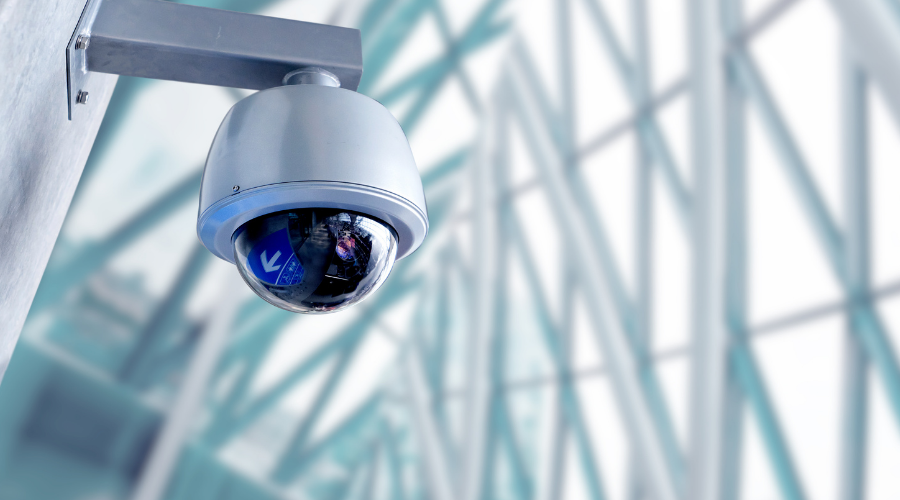Video Analytics Total Cost of Ownership: 4 Factors to Consider

Considerations for Planning Your Video Analytics Deployment
Video analytics enables organizations to realize the value of their video surveillance investments by deriving intelligence from video content. Driven by Artificial Intelligence (AI) capabilities, video analytics technology identifies, classifies, and indexes objects in surveillance video, so the extracted and categorized data can be searched, acted upon, and quantified. Users can also set customized, rule-based alerts that notify operators in real-time, allowing operators to quickly assess and respond to incidents. In addition, video can be processed on demand, so users can search video and aggregate long-term metadata to deliver business intelligence about behaviors and events.
When an organization is considering a video analytics implementation, one major factor to evaluate is the total cost of implementing the solution into the existing technology ecosystem. Naturally, this cost will vary for each organization based on their unique environment. Read on to understand more about the 4 main deployment factors and their cost considerations (hardware, networking, training, and implementation), as well as the long-term value to keep in mind when planning your video analytics deployment.
1. Camera & Hardware Requirements
To enable video processing with video analytics software, solution architects need to plan around complex hardware requirements that support the technology. For many organizations, cameras are the primary hardware investment, making camera type and placement key deployment considerations as they can also impact accuracy. Video resolution, bitrate, and frame rate will also factor into the recommended supporting hardware for your video analysis integration.
Additionally, video processing requirements – calculated based on the need for real-time or on-demand processing – must also be evaluated when deploying a video analytics solution as it will inform additional hardware investments. Finally, you can’t overlook software licensing models and the number of licenses needed to support your environment and needs.
2. Deployment Model
The architecture of a video analytics solution can also vary based on organizational needs. Some will be looking at cross-site analytics for multiple locations, whereas others might be considering analytics for a single site. Deployments should account for scalability and future growth. Adding new sites or increasing the number of cameras may require additional hardware, network capacity, and server resources. The main deployment models available today are an on-camera edge option, cloud or server-based option, or a hybrid option of the others.
3. Networking Requirements
It is critical to evaluate the networking requirements of organizations when planning for a video analytics implementation. A higher bandwidth is necessary to ensure smooth and real-time data transmissions. The more cameras, especially those with high resolution or high framerate, the more network bandwidth is required. Organizations must ensure their network infrastructure – like switches, routers, and cables – are optimized to handle these high bandwidth requirements.
4. Training & Implementation Costs
Finally, there may also be soft costs associated with user training and system deployment – like the cost of a third-party systems integrator. Additionally, deploying software in the cloud or on-premises pose different costs for an organization. An on-prem solution provides IT departments with greater flexibility over configurations and updates, but the associated costs of upkeep are not insignificant. Organizations who cannot, or don’t want, to support IT maintenance in-house can benefit from cloud-based options but must factor in the cost of services rendered.
Weighing the Vertical-Based Benefits
While it’s easy to focus on the upfront costs of a video analytics system, it’s important to remember the savings and value outcomes of the investment over time. Every organization is different and will have varied benefits and results based on industry and user type. Let’s dig into a few examples that demonstrate the positive financial impact of a video analytics system on a commercial business or law enforcement or security team.
Law Enforcement & Security Enablement
1. Accelerate Post-Event Investigation
Increase scene understanding and accelerate time to target with granular, filtered video searches. Accurately review hours or days of footage, in a matter of minutes, for quicker case resolution.
2. Increase Real-Time Situational Awareness
Improve situational awareness and quickly respond to evolving situations by triggering real-time notifications for pre-defined behaviors or activity.
3. Optimize Footfall and Traffic Flows
Empowers police professionals with accurate trend insights derived from aggregated data, so agencies can proactively identify and preventatively prepare for peak traffic times and problem hotspots and better execute on community policing initiatives.
Retail & Hospitality
1. Maximize Traffic Flow and Space Utilization
Understand how visitors navigate and interact within a space to inform facility layout, staffing, and marketing and merchandising decision making. Leverage real-time alerting to proactively respond to queue formations and alleviate crowding.
2. Derive Intelligence and Drive Performance
Empower operational decision-making and increase productivity, real-time response, and incident investigations with demographic intelligence, behavioral heatmaps, and data visualizations. Enable staff and visitor management and with data-driven planning; real-time alerts for unexpected and potentially suspicious behaviors; and forensic search capabilities for rapid video investigation.
3. Improve Facility Maintenance
Improve efficiency and create a cleaner environment for your guests and visitors by planning maintenance schedules based on actual facility usage rather than traditional time-based schedules.
These are just a few examples of how video analytics can be applied to increase productivity while reducing inefficiencies and costs. Ready to discover the benefits of video analysis for your industry and organization? Get started with a personalized demo!
This post was originally published in September 2021, and has been refreshed and updated for accuracy.
Signup to receive a monthly blog digest.